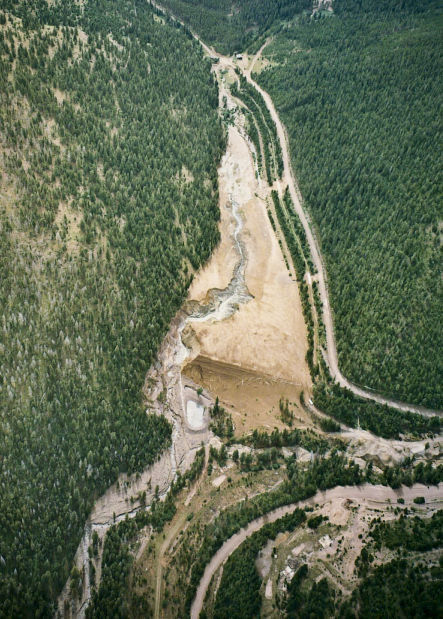The Blackfoot River in western Montana was made famous by “A River Runs Through It,” the award-winning film based on a Norman Maclean book. Like many rivers in the west, however, the Blackfoot has suffered from decades of mining at its headwaters.

In 1975, heavy rains caused the dam that contained mine waste from the Mike Horse Mine to fail, releasing metals-laced waste (known as tailings) for almost 10 miles downstream.

Since then roughly $40 million dollars has been spent in the cleanup effort.
I toured the site this week with representatives from the U.S. Forest Service, the Montana Natural Resources Damage Program and Montana Trout Unlimited. It was encouraging to see the transformation.
Nearly a million cubic yards of mine tailings have been scoured from the headwaters, and moved to a new location outside of the river’s floodplain. Toxic runoff from the underground mine tunnels are now routed away from the streams to a water treatment plant that will be required in perpetuity to treat the acid mine drainage and prevent toxic metals from being released downstream. The floodplain has been restored, and the streambanks planted with willows. The headwater streams are once again filled with cold clear water, and aquatic insects and the trout that feed on them are returning.
The decades-long effort to clean up this monumental mess is certainly a success story, but the Upper Blackfoot is also a vital cautionary tale: tailings dam failures, like this one, are not a thing of the past. Mining companies are mining increasingly lower grade deposits, resulting in larger volumes of mine waste that are stored behind taller tailings dams. Tailings dam failures in recent years in Canada, Brazil, and elsewhere are dominating headlines with their destructive impacts. Research has confirmed that tailings dam failures are increasing in rate and severity.

Compared to the Mike Horse tailings dam in Montana that failed in the 1970s and released an estimated 200,000 cubic yards of tailings, the 2014 Mount Polley Mine tailings dam failure in Canada released 31 million cubic yards, the 2015 Samarco tailings dam failure in Brazil released an estimated 80 million cubic yards, and the 2019 Brumadinho failure released 15 million cubic yards, resulting in hundreds of fatalities and decimating the downstream ecosystem.
While the risks and consequences of tailings dam failures have escalated, the changes to mining policy and practice have not kept pace. There are an estimated 29,000-35,000 active, inactive and abandoned tailings dams across the globe. Addressing the magnitude of these risks cannot be left to industry alone. A credible, transparent, well-resourced, independent agency is urgently needed to implement and enforce safe tailings disposal practices and regulations. This independent agency must engage with communities, Indigenous Peoples, labor representatives, civil society organizations and independent experts.

Earthworks and our allies are calling for urgent reform. We recently joined with over 150 frontline communities and civil society organizations to publish a report, Safety First: Guidelines for Responsible Tailings Management, that outlines the changes in mining policy and practice that are necessary to better protect communities and the environment.
Your Support Makes Our Work Possible
Earthworks helps families on the front lines of mining, drilling, and fracking. We use sound science to expose health, environmental, economic, social, and cultural impacts of mining and energy extraction. To support our efforts, please consider a tax-deductible donation today that will go toward our work reforming government policies, improving corporate practices, influencing investment decisions, and encouraging responsible materials sourcing and consumption.

